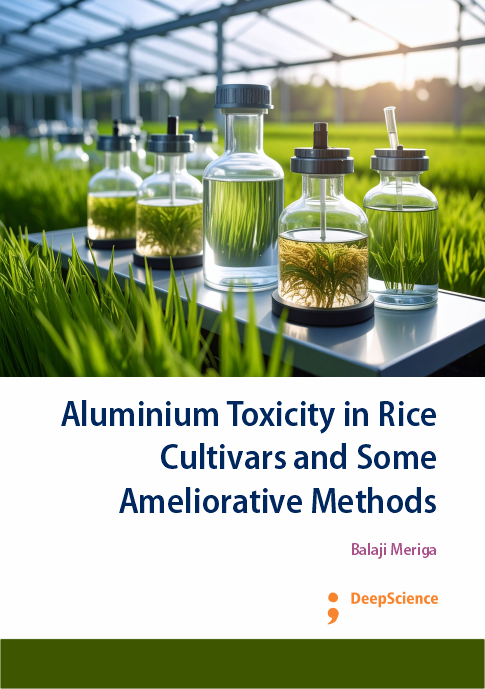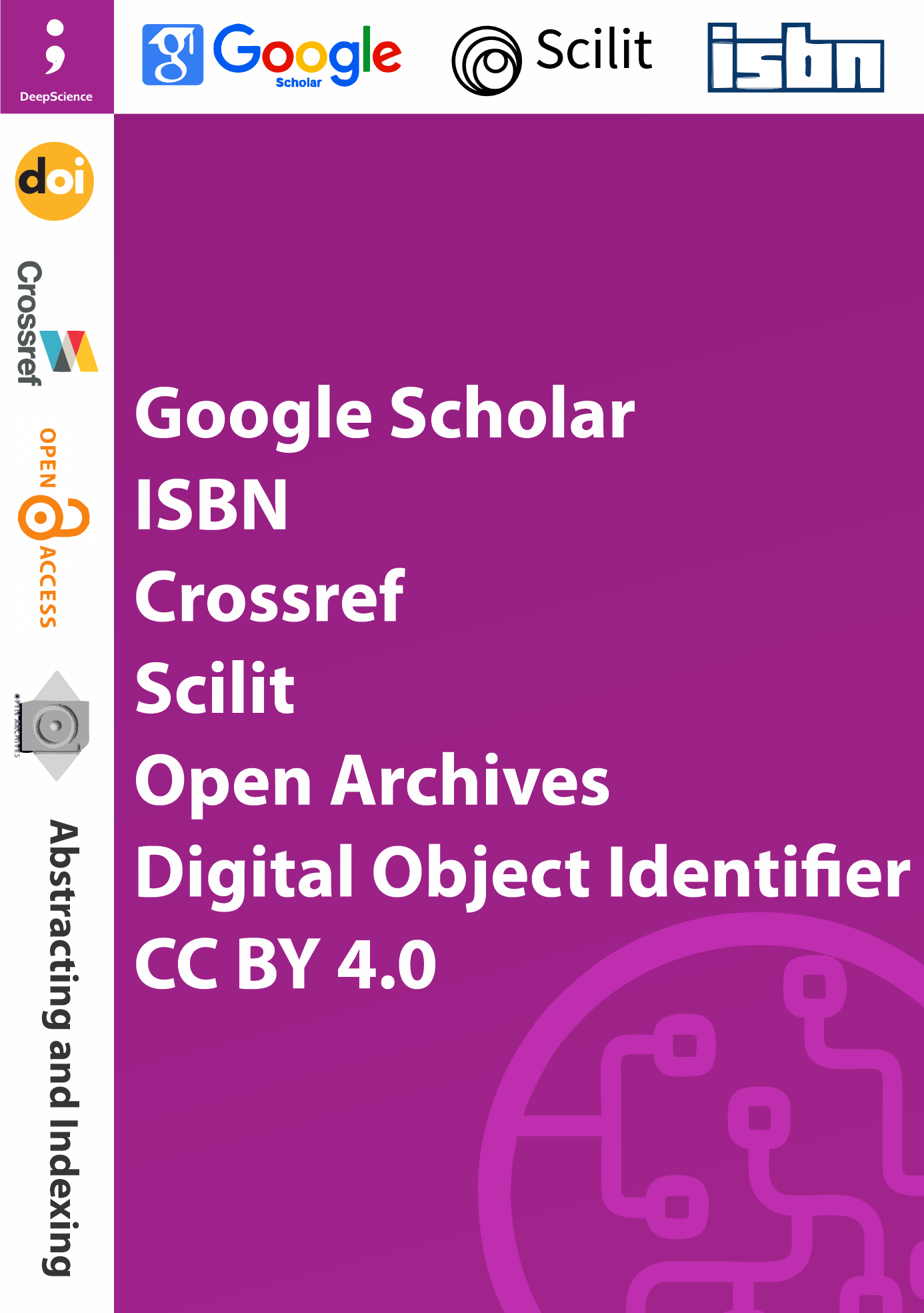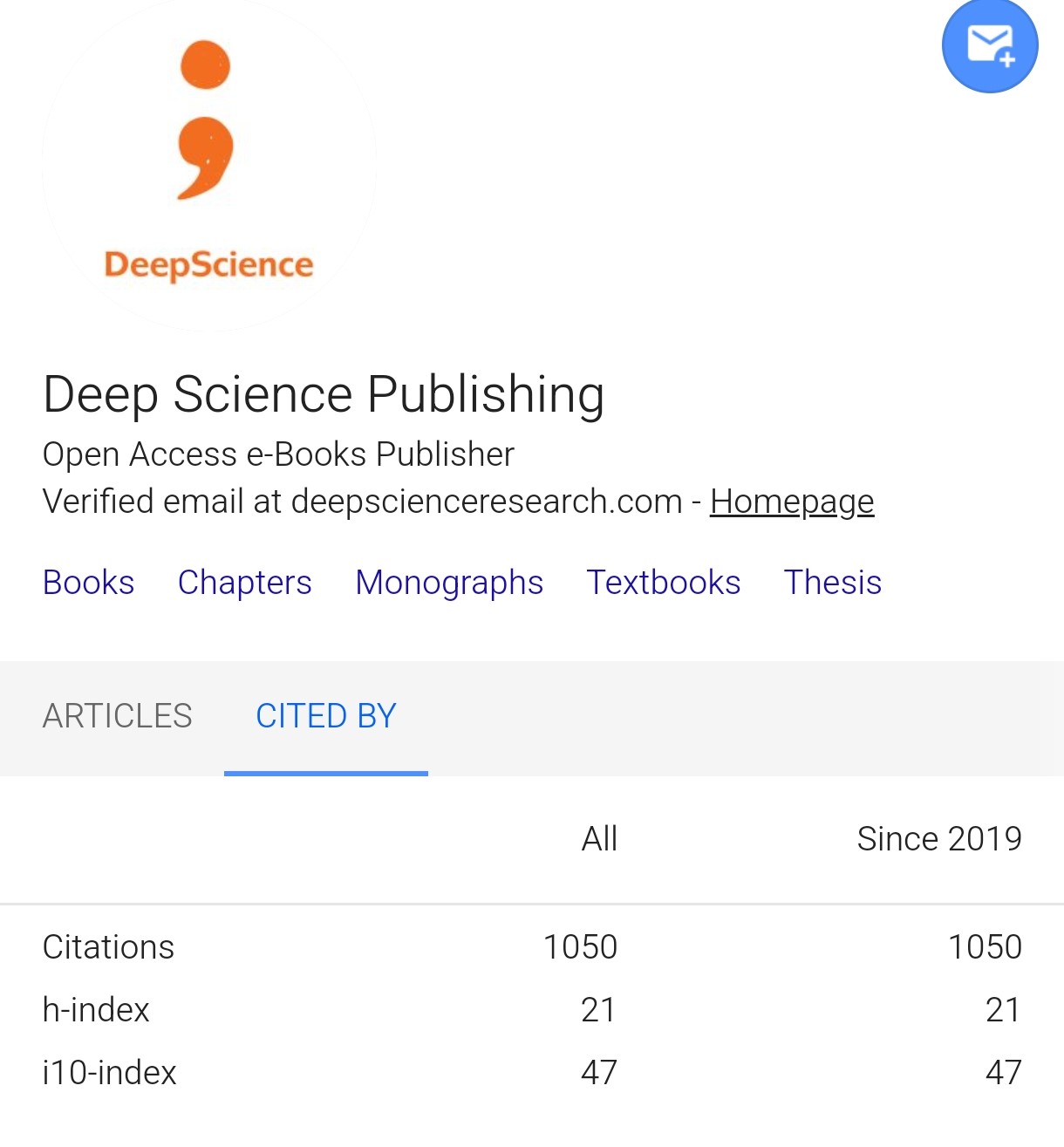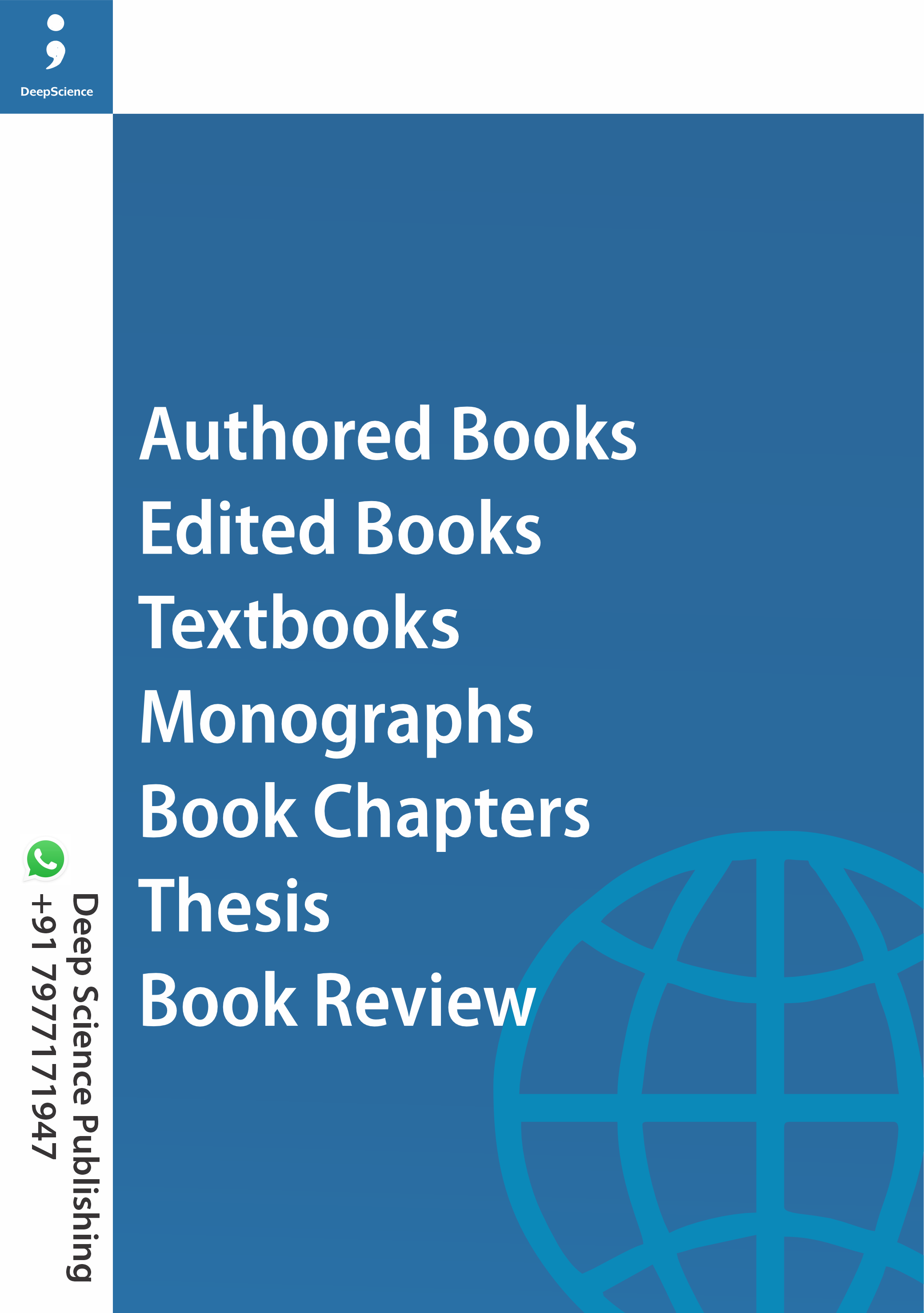Aluminium Toxicity in Rice Cultivars and Some Ameliorative Methods
Keywords:
Aluminium Toxicity, Rice Cultivars, Acid Soils, Abiotic Stress, Oxidative Stress, Antioxidant Enzymes, Silicon AmeliorationSynopsis
Rice is a staple food crop for more than half of the global population. Its yields are limited by many factors including Aluminium (Al) toxicity. Al is a major abiotic stress factor affecting crop productivity, especially in acidic soils where soluble forms of aluminium becomes toxic to plants. Despite its importance, the physiological, biochemical, and molecular mechanisms of Al toxicity and tolerance in rice remain incompletely understood. This book is a comprehensive exploration into the intricate responses of rice seedlings to aluminium stress, with focus on cultivar-specific differences in tolerance and injury.
The investigations presented herein were undertaken to decipher how different rice cultivars-VIK, IR-8, IR-64, PB, and SUR-respond to varying concentrations and durations of aluminium exposure. Particular focus was given to changes in growth parameters, aluminium accumulation, cellular and histological alterations, membrane lipid peroxidation, antioxidant enzyme responses, metabolic adaptations, and molecular markers associated with tolerance.
The findings reveal that Al stress significantly hinders growth, root-shoot development, and nutrient uptake, particularly under lower pH conditions and in younger seedlings. However, PB and SUR cultivars demonstrated marked resilience, evident from their minimal growth inhibition, reduced oxidative damage, and efficient antioxidant responses. Histological studies revealed effective compartmentalization of aluminium in tolerant cultivars, minimizing injury to root tissues. Elevated activity of key enzymes in the pentose phosphate pathway and TCA cycle, alongside enhanced exudation of citric acid, reflect metabolic adjustments in PB and SUR. Moreover, protein profiling and DNA analysis identified potential molecular markers and stress-inducible components associated with tolerance.
This book not only enriches our understanding of aluminium-induced stress responses but also underscores potential physiological and molecular markers that could be leveraged in rice breeding programs for developing Al-tolerant cultivars. The insights presented here aim to contribute towards sustainable agricultural practices and improved food security in regions with acidic soils.
We hope that researchers, students, plant physiologists, agronomists, and molecular biologists will find this work a valuable resource in the field of plant stress physiology and crop improvement.
References
Yu H, Lin T, Meng X, et al. A route to de novo domestication of wild allotetraploid rice. Cell. 2021;184(5):1156-1170.e14. doi:10.1016/j.cell.2021.01.013
Donald l, Sparaks, Balwanth, et al. the chemistry of soil acidity. Environmental soil chemistry 2024; 9 (3); 381-410.
Ellinger D, Sode B, Falter C, Voigt CA. Resistance of callose synthase activity to free fatty acid inhibition as an indicator of Fusarium head blight resistance in wheat. Plant Signal Behav. 2014;9(7):e28982. doi:10.4161/psb.28982
Wang X, Zheng G, Chen T, et al. Effect of phosphate amendments on improving the fertilizer efficiency and reducing the mobility of heavy metals during sewage sludge composting. J Environ Manage. 2019;235:124-132. doi:10.1016/j.jenvman.2019.01.048.
Wang L, Jiang X, Sun B, et al. Spectroscopy and Photochemistry of [Al, N, C, O, H]: Connectivity to Aluminium-Bearing Species in the Universe. Chemistry. 2024;30(39):e202401397. doi:10.1002/chem.202401397.
Wang Y, Li H, Zhang J, et al. Effect of aluminum combined with ApoEε4 on Tau phosphorylation and Aβ deposition. J Trace Elem Med Biol. 2021; 64:126700. doi:10.1016/j.jtemb.2020.126700.
Castro, G. S. A., and Carlos Alexandre Costa Crusciol. "Effects of superficial liming and silicate application on soil fertility and crop yield under rotation." Geoderma 195 (2013): 234-242.
Duan W, Lu F, Cui Y, et al. Genome-Wide Identification and Characterisation of Wheat MATE Genes Reveals Their Roles in Aluminium Tolerance. Int J Mol Sci. 2022;23(8):4418. Published 2022 Apr 16. doi:10.3390/ijms23084418.
Zuev EV, Lebedeva TV, Yakovleva OV, et al. Genetic Diversity for Effective Resistance in Wheat Landraces from Ethiopia and Eritrea to Fungal Diseases and Toxic Aluminum Ions. Plants (Basel). 2024;13(8):1166. Published 2024 Apr 22. doi:10.3390/plants13081166.
Mosa A, Selim EM, El-Kadi SM, et al. Ecotoxicological assessment of toxic elements contamination in mangrove ecosystem along the Red Sea coast, Egypt. Mar Pollut Bull. 2022;176:113446. doi:10.1016/j.marpolbul.2022.113446.
Ranjan A, Sinha R, Lal SK, Bishi SK, Singh AK. Phytohormone signalling and cross-talk to alleviate aluminium toxicity in plants. Plant Cell Rep. 2021;40(8):1331-1343. doi:10.1007/s00299-021-02724-2.
Chauhan DK, Yadav V, Vaculík M, et al. Aluminum toxicity and aluminum stress-induced physiological tolerance responses in higher plants. Crit Rev Biotechnol. 2021;41(5):715-730. doi:10.1080/07388551.2021.1874282.
Chakraborty S, Mishra A, Verma E, Tiwari B, Mishra AK, Singh SS. Physiological mechanisms of aluminum (Al) toxicity tolerance in nitrogen-fixing aquatic macrophyte Azolla microphylla Kaulf: phytoremediation, metabolic rearrangements, and antioxidative enzyme responses. Environ Sci Pollut Res Int. 2019;26(9):9041-9054. doi:10.1007/s11356-019-04408-7.
Rahimzadeh MR, Rahimzadeh MR, Kazemi S, Amiri RJ, Pirzadeh M, Moghadamnia AA. Aluminum Poisoning with Emphasis on Its Mechanism and Treatment of Intoxication. Emerg Med Int. 2022;2022:1480553. Published 2022 Jan 11. doi:10.1155/2022/1480553.
Mishra N, Jiang C, Chen L, Paul A, Chatterjee A, Shen G. Achieving abiotic stress tolerance in plants through antioxidative defense mechanisms. Front Plant Sci. 2023;14:1110622. Published 2023 Jun 2. doi:10.3389/fpls.2023.1110622.
Ofoe R, Thomas RH, Asiedu SK, Wang-Pruski G, Fofana B, Abbey L. Aluminum in plant: Benefits, toxicity and tolerance mechanisms. Front Plant Sci. 2023;13:1085998. Published 2023 Jan 13. doi:10.3389/fpls.2022.1085998.
Zhang S, Geng L, Fan L, et al. Spraying silicon to decrease inorganic arsenic accumulation in rice grain from arsenic-contaminated paddy soil. Sci Total Environ. 2020;704:135239. doi:10.1016/j.scitotenv.2019.135239.
Kumar S, Kumar S, Mohapatra T. Interaction Between Macro- and Micro-Nutrients in Plants. Front Plant Sci. 2021;12:665583. Published 2021 May 10. doi:10.3389/fpls.2021.665583.
Guo C, Shabala S, Chen ZH, Zhou M, Zhao C. Aluminium tolerance and stomata operation: Towards optimising crop performance in acid soil. Plant Physiol Biochem. 2024;210:108626. doi:10.1016/j.plaphy.2024.108626.
Ofoe R, Thomas RH, Asiedu SK, Wang-Pruski G, Fofana B, Abbey L. Aluminum in plant: Benefits, toxicity and tolerance mechanisms. Front Plant Sci. 2023;13:1085998. Published 2023 Jan 13. doi:10.3389/fpls.2022.1085998.
Ropelewska M, Gross MH, Konieczny I. DNA and Polyphosphate in Directed Proteolysis for DNA Replication Control. Front Microbiol. 2020;11:585717. Published 2020 Oct 2. doi:10.3389/fmicb.2020.585717.
Kobayashi Y, Kobayashi Y, Watanabe T, et al. Molecular and physiological analysis of Al³⁺ and H⁺ rhizotoxicities at moderately acidic conditions. Plant Physiol. 2013;163(1):180-192. doi:10.1104/pp.113.222893.
Abreha KB, Enyew M, Carlsson AS, et al. Sorghum in dryland: morphological, physiological, and molecular responses of sorghum under drought stress. Planta. 2021;255(1):20. Published 2021 Dec 11. doi:10.1007/s00425-021-03799-7.
Pugazhendhi A, Govindasamy C, Sharma A. Heavy metal accumulation in root and shoot tapioca plant biomass grown in agriculture land situated around the magnesite mine tailings. Environ Res. 2024;257:119287. doi:10.1016/j.envres.2024.119287.













